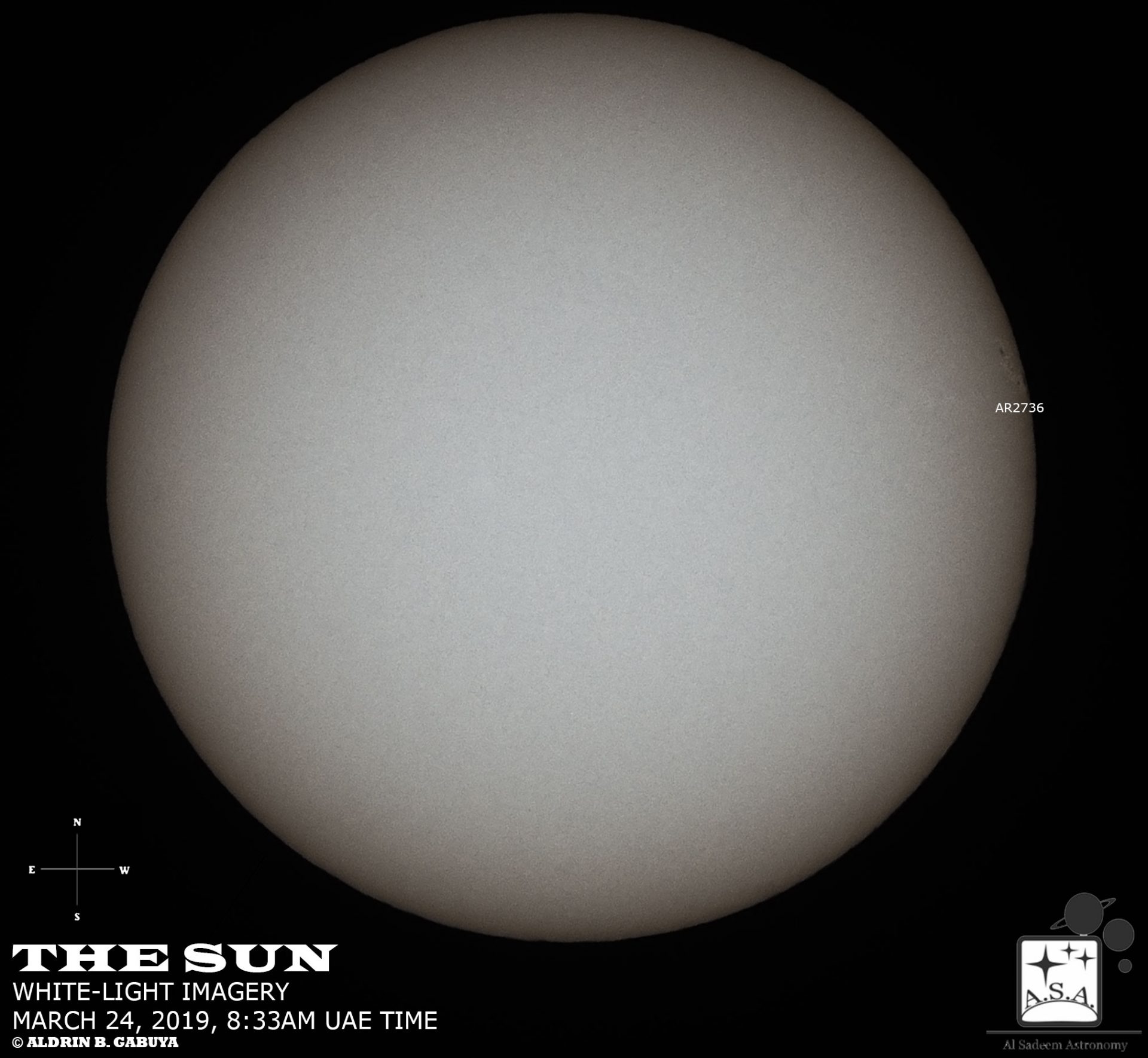The sky was hazy to mostly cloudy with intermittent moderate to strong wind gusts, blowing dust, which provided poor seeing and transparency at the time these images were taken.
Here is today’s white-light solar imagery taken from Al Sadeem Observatory, March 24, 2019.
Few days after the previous solar monitoring, AR2735 completely disintegrated while the other sunspot group AR2736 (Modified Zurich/Mcintosh sunspot configuration: Dsi/beta) has been crackling with several minor B-class flares as it departs at the western limb. The latest sunspot number (based on visual count and Wolf number calculation) is 14.
With this stance, space weather agencies* forecast solar activity to be at low levels reducing the chances of any significant solar flare activity (ranging up to B-class intensity) with the expected departure of AR2736. The extent of the frequency and intensity of the Sun’s activity will highly depend on the magnetic flux fluctuations happening in the visible ARs in the coming days. Close monitoring is being conducted by numerous space weather agencies for any significant development.
Equipment used are Skywatcher 120mm refractor telescope with Baader filter and unmodified Canon EOS 1D Mark IV DSLR camera for visible imagery, mounted on Skywatcher EQ6 Pro. Pre-processing of visible solar images was performed in PIPP, stacking in Autostakkert, slight wavelet adjustments in Registax 6 and post-processing in Adobe Photoshop CC.
*Technical reports courtesy of Solar Influence Data Center (SIDC), NOAA-Space Weather Prediction Center (NOAA-SWPC)
Weather Data (8:20 AM – 8:35 AM, March 24, 2019):
Average Temperature: 26°C
Average Humidity: 65.5%
Average Wind Speed and Direction: 41.6 kph from SSE
Average Cloud Cover: 80%
Average Air Pressure: 1000.4 hpa
Average Solar Radiation: 422.235 W/m^2
Average UV Radiation: 770 µW/m^2 (low)




